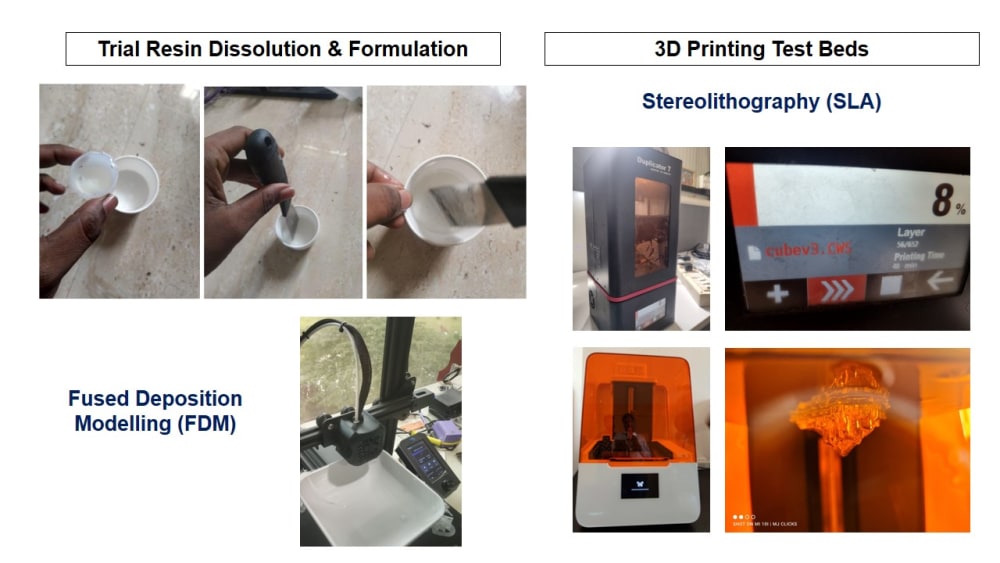
ABOUT US:
We are a young team of aerospace engineers and 3D printing enthusiasts incubated at the lush green campus of National Institute of Technology Karnataka (NITK) Surathkal.
PROBLEM:
- Limitation in the shape, flexibility and stretch ability of traditional battery cells owing to its manufacturing process
- Traditional lithium-ion rechargeable batteries which are widely used in laptops and smartphones has downsides for both people and the planet.
- Lower energy density, complex manufacturing and safety issues are the major shortcomings of conventional batteries.
- The raw material extraction process is a very much labour-intensive process and requires large amounts of resources like energy and water.
- Proper recycling of the used batteries is also a major concern.
SOLUTION:
Solid State Batteries (SSB) are promising alternatives for conventional batteries because of improved safety, size and weight. But we don’t see much of the world using SSBs at present because of the complex manufacturing process involved in its making. 3D Printing technology provides a way to produce and bring SSBs to the market in a cost effective way.
SOCIO-ECONOMIC IMPACT:
The innovation will:
- Benefit local automotive manufacturing sector specifically Electric Vehicles (EVs) by reducing costs and increasing energy density & overall efficiency.
- Gives enormous design freedom to telecom companies in producing next generation mobile devices incorporating 5G and 6G communication technologies.
- Hugely impact Aerospace & Aviation sectors because of space and weight reductions thus allowing for more payload capacity at reduced costs.
- Generate employment opportunities as it needs skilled workforce with CAD and GD&T knowledge.
MARKET POTENTIAL:
As per the latest report by NITI Aayog in collaboration with Rocky Mountain Institute (RMI), India’s future demand for batteries under an ‘accelerated scenario’ due to the increasing number of electric vehicles and significant grid storage requirement. India’s annual battery market could surpass $15 Billion (~₹1.12 Trillion) by 2030. The battery demand in India is expected to rise to 260 GWh by 2030.
TARGET CUSTOMERS:
EV Manufacturers, Mobile phone OEMs and companies working in the development of Wearables, Medical Implants and Portable Electronic Devices
REVENUE MODEL:
Target pricing of Rs. 15,000/- (183.5 USD) per kWh
1st Year Production target of 500 kWh (100 units of 5 kWh capacity) resulting in Gross Revenue of Rs. 75,00,000/- (91,750 USD)
Further, production capacity will be increased in the coming years to meet the demand.
COMPETITORS:
Reliance, Hyundai Global Motors, Ola Electric Mobility, Lucas-TVS, Mahindra & Mahindra, Amara Raja Batteries, Exide Industries, Rajesh Exports, Larsen & Toubro and India Power Corporation
MARKETING CHANNELS:
B2B through existing service providers and B2C in local industries of Tier-2 & 3 cities
-
Awards
-
 2023 Top 100 Entries
2023 Top 100 Entries
Like this entry?
-
About the Entrant
- Name:Raghavendra Surendra
- Type of entry:teamTeam members:
- Software used for this entry:No
- Patent status:none

